| Blade Size | 10" Hand Forged High Grade Carbon Steel. 5160 Highly Polished blade. |
|---|---|
| Handle Size | 5" Rat Tail Tang Stone Handle. |
| Blade Material | Highly Graded 5160 Carbon Steel |
| Handle Material | Blue Stone, Very Rare, Valuable and Durable Matrial. |
| Scabbard Material | Pinewood, Refined Water Buffalo Leather |
| Handle Type | Rat Tail Tang |
| Upper Spine | 8 mm |
| Lower Spine | 3 mm |
| Belly | 2.1" (5.5 cm), 2.8" |
| Khukuri Weight | 750gm |
| Total Weight | 1000gm |
| Other Included Items | Sheath, Karda, Chakhmakh |
10″ Historic 2 Fullers Kukri | Hand-Forged High Carbon Steel | Blue Stone Handle. It is one of the main features of the kukri. Here, the panel of the blade is ground and its mass is taken away in a long, elongated path (shallow) as seen in the images of the kukri. The blade is forged and grinded in such a way that two chirras (fullers) are created that are divided by a hump (hill) that runs across the blade. This is also called a dui chirra (double chirra/fuller) format.
US$ 139.00
10″ Historic 2 Fullers Kukri | Hand-Forged High Carbon Steel | Blue Stone Handle. It is one of the main features of the kukri. Here, the panel of the blade is ground and its mass is taken away in a long, elongated path (shallow) as seen in the images of the kukri. The blade is forged and grinded in such a way that two chirras (fullers) are created that are divided by a hump (hill) that runs across the blade. This is also called a dui chirra (double chirra/fuller) format.
In the typical kukri term, it’s called “Ang Khola or Ang Kholnu”. Ang means the panel (body), and Khola or kholnu means the opened version or to open. The main reasons for such a type of blade are to reduce the weight of the blade and to give a balanced feel. It also works as a shock absorber for the edge when smashed against any hard object. Here, the pressure (shock wave) felt by the edge is reduced by working as a cushion for the edge. The tension created by the impact is normalized. It also gives a beautiful look, which is possible only from a master craftsman. The two dark grooves in the upper spine of the blade add beauty.
The notch (kaura or kaudi) in the blade near the hilt of most khukuri serves as a conduit for the blood on the blade to drip out and to prevent it from soiling the hilt, as well as a place for catching and neutralizing an enemy blade. Unlike a regular notch, this khukuri has a notch shaped like a bow with an arrow.
Only logged in customers who have purchased this product may leave a review.

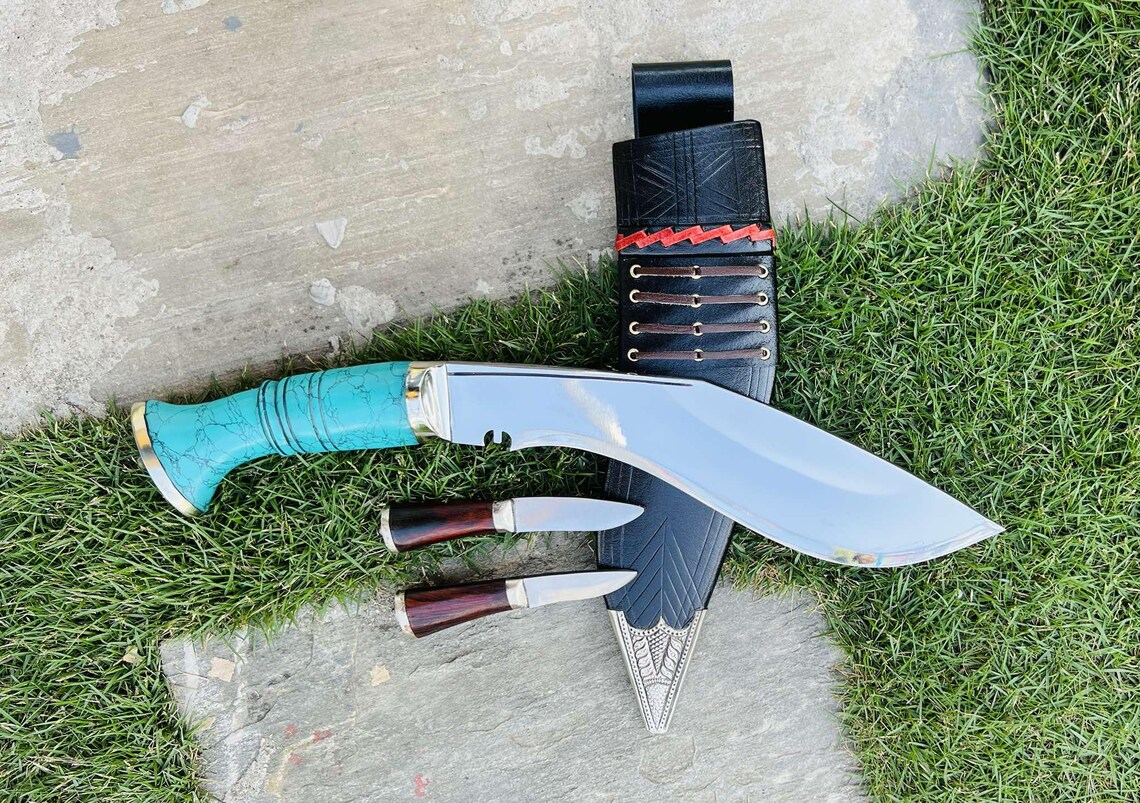
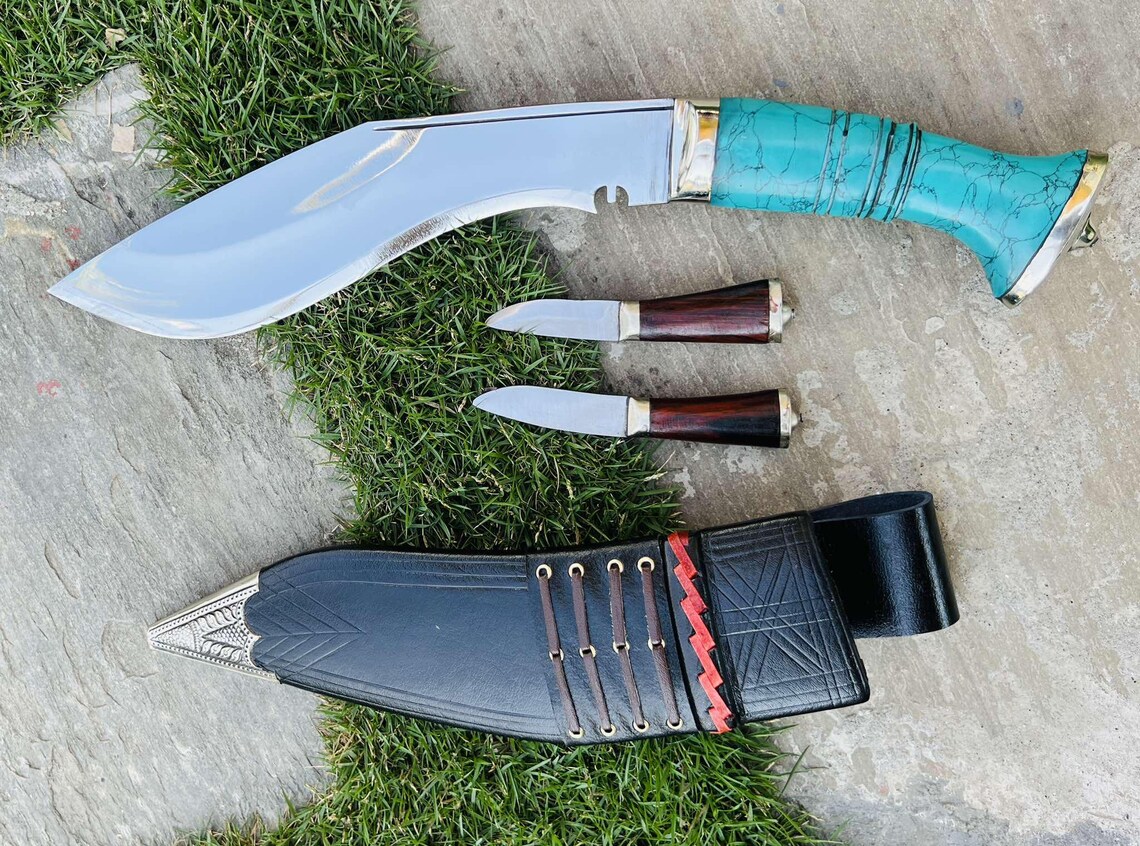
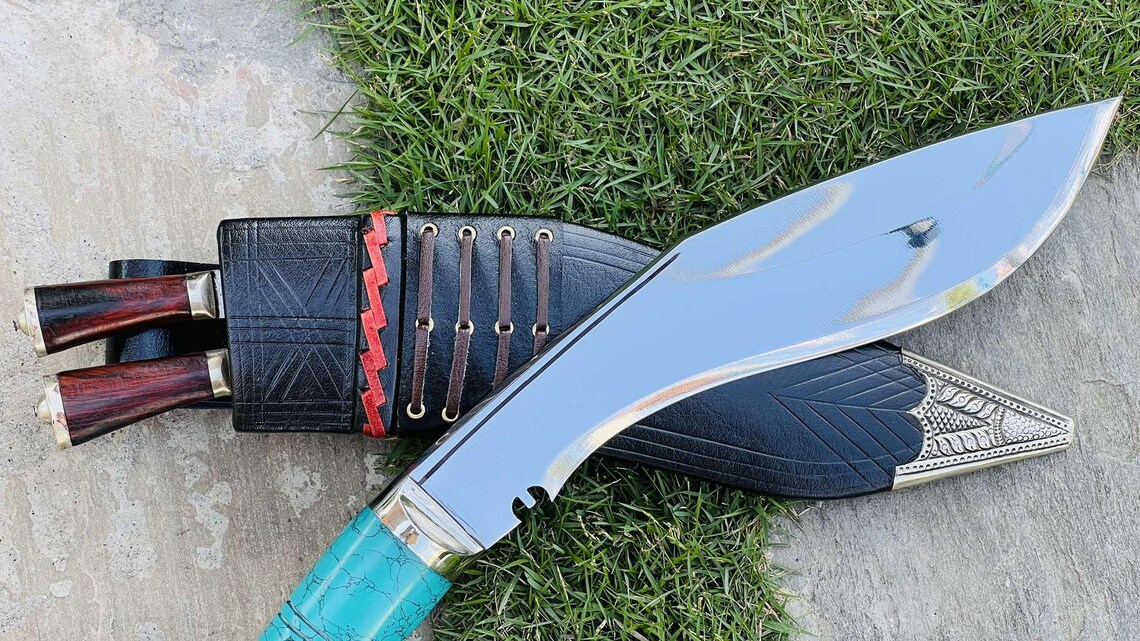
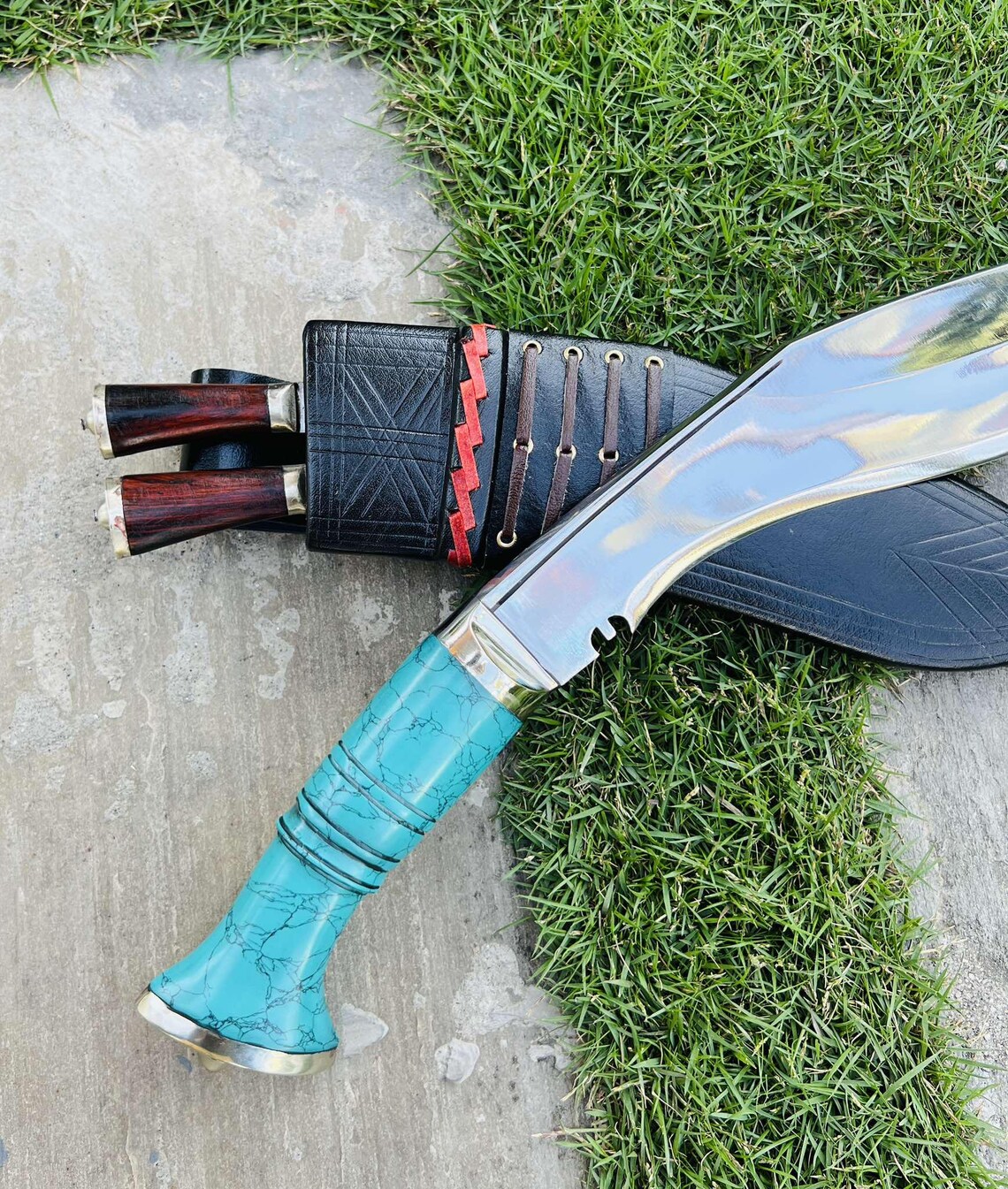
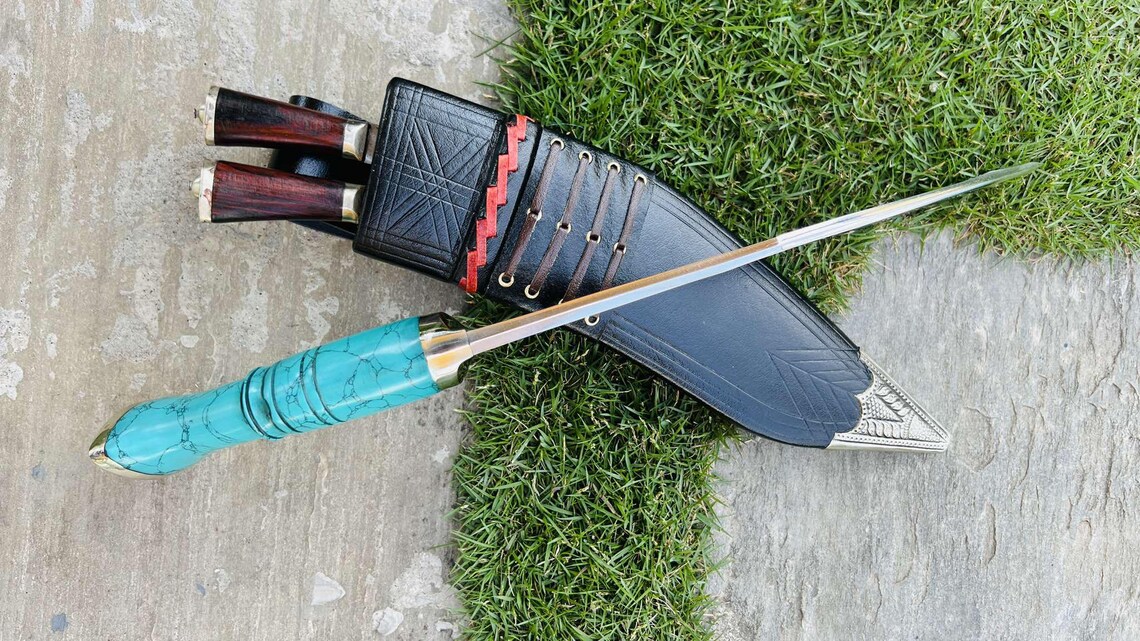
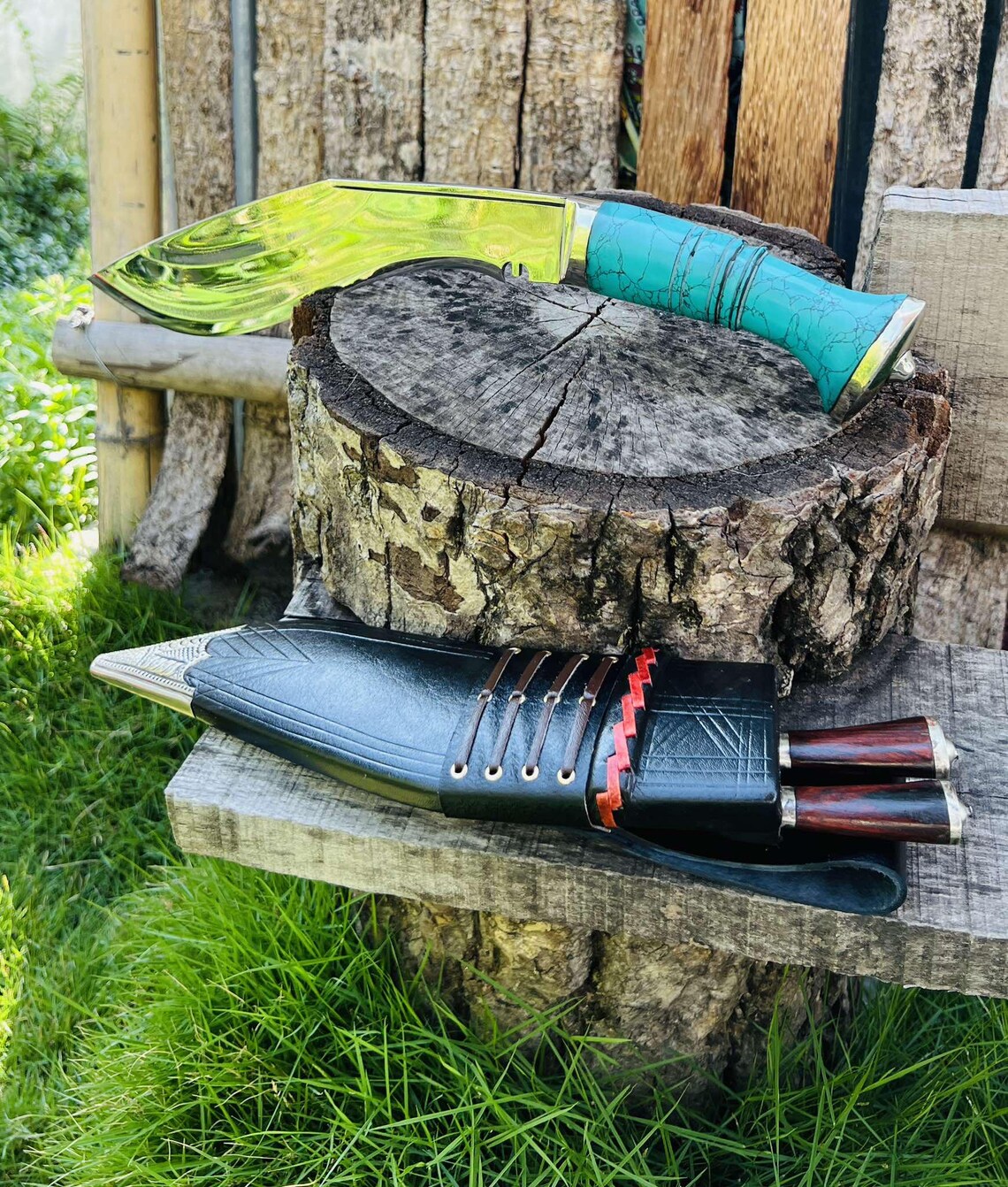

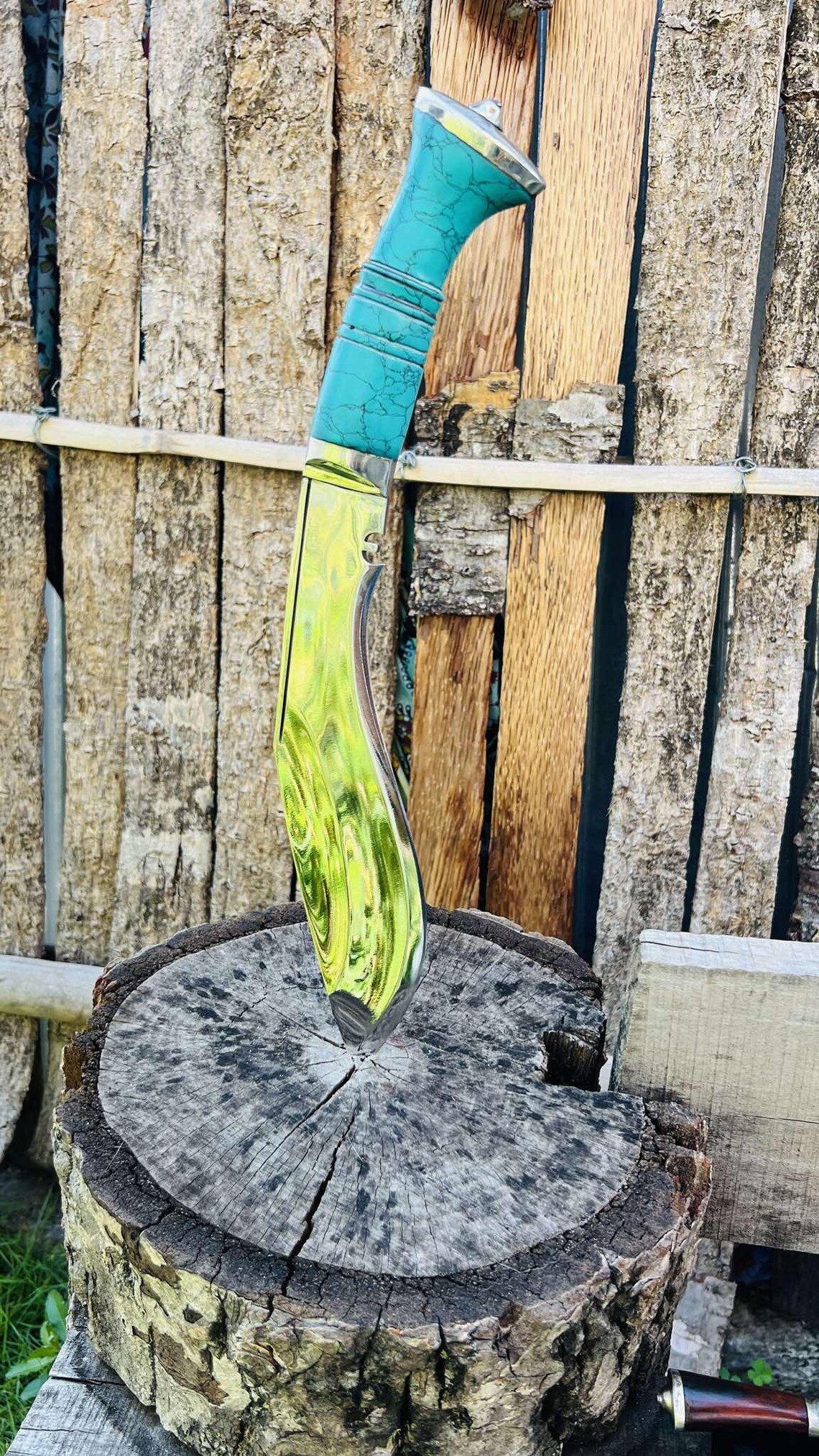
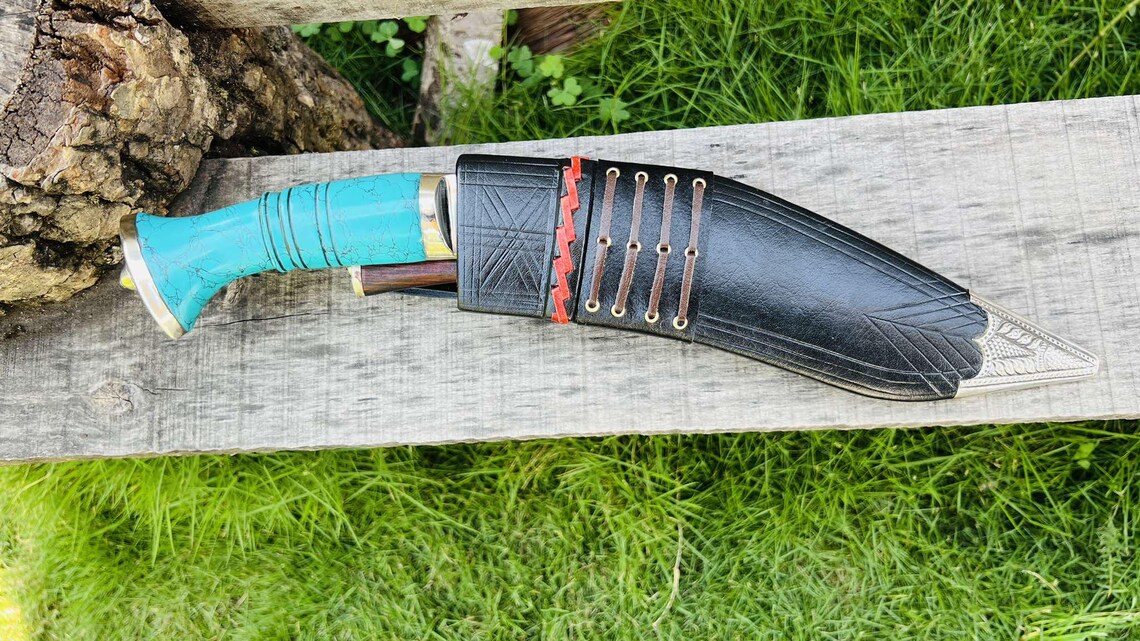
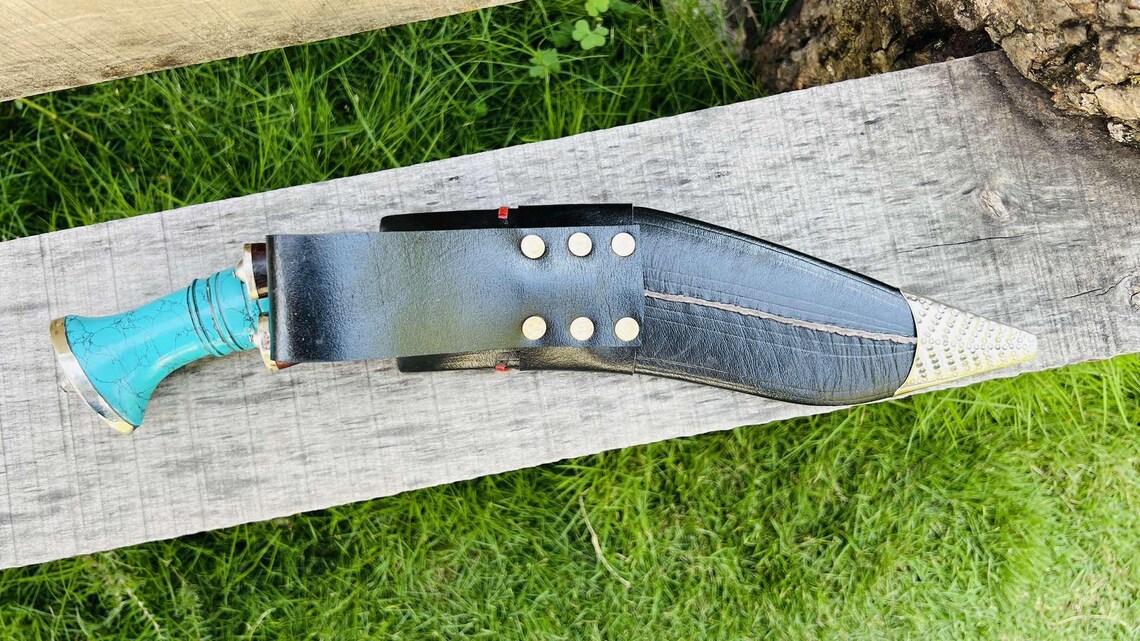
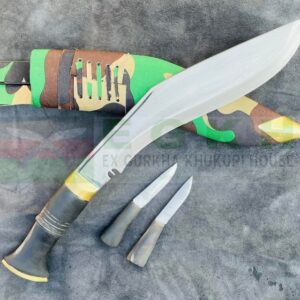
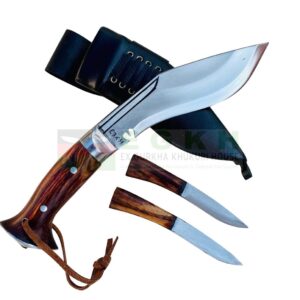
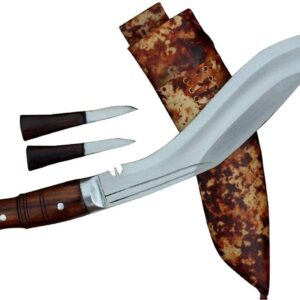
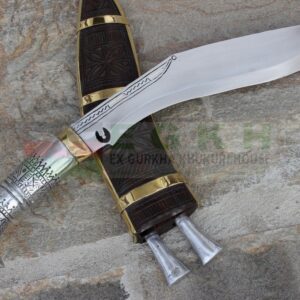
Reviews
There are no reviews yet.